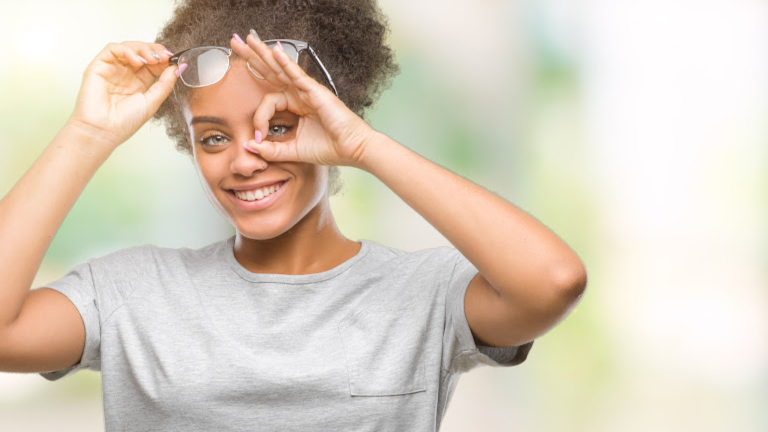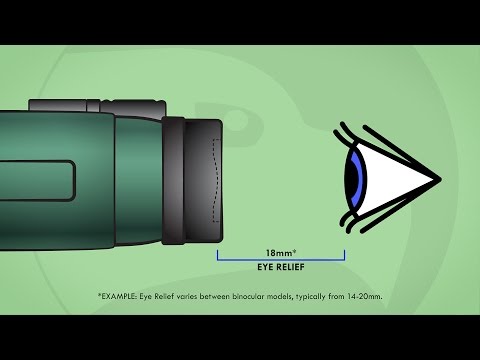Are you an avid bird watcher, a nature photographer or someone who simply wants to explore your surroundings? If so, binoculars are a must-have tool.
Using this powerful device not only allows you to get better views of distant subjects and high magnification, but it will also make the experience more enjoyable!
Unfortunately, many people find that glasses often get in the way and reduce their view when using binoculars. Fear not – there is still hope for those of us who wear glasses thanks to special techniques and attachments available for viewing through them.
In this article, we’ll explain everything you need to know about how to use binoculars with glasses – from proper eye relief adjustments and specific mask designs specifically made for wearing eyeglasses while looking through binoculars optically!
How To Use Binoculars With Glasses? (Eye Relief & Eye Cups)
1. Eyecups and Eye Relief
Eye relief is the distance from the binoculars to your eyes. The larger the eye relief, the more comfortable it is. Eye cups are the distance between your eyes and your binoculars. The larger the eyecup, the less you will have to look through your glasses when using binoculars.
People who do not wear glasses or have low-level prescriptions often have problems with eye relief. It is also essential to adjust the eye relief setting so that the eyepiece sits above your glasses, not in front of them.
The author recommends a maximum of 10mm for people who wear eyeglasses and a minimum of 5mm for people who do not wear glasses, depending on their prescription.
The maximum recommended eye relief for those who wear glasses is 15mm. A minimum of 10mm is recommended. If a person wears eyeglasses, adjust the eye relief so that the eyepiece sits above the glasses. You need to adjust the eye relief so that the eyepiece sits at least 10mm above your glasses.
IMPORTANT: If you buy eyeglasses with a thick frame, it may be hard for you to see through the binoculars. You may need to adjust the eye relief to ensure that your binoculars will be positioned above your glasses.
2. How much eye relief is enough?
There is no standard for how much eye relief you need. Eye relief is a personal preference, based on the type of binoculars and your preferences. A 10mm minimum and 15mm maximum is recommended for people who wear glasses.
For people who do not wear glasses, a 5mm minimum and 10mm maximum is recommended, again depending on your prescription.
An excellent way to measure eye relief is to press the binocular eyepieces against your face while using them, then read the number off of the adjustment ring.
3. Eyecups:
Eyecups can be helpful for people who wear glasses by allowing you to get the binoculars closer to your face. Doing this will allow you to see through the binoculars with your glasses on. There are many different eye cups, including rubber, plastic, and leather.
The larger the eyecup, the less you will have to look through your glasses when adjusting them. You can also purchase eyepieces that come apart in a hinge to open wider. It will be easier to adjust them to be above your glasses.
If there is a requirement for more flexibility and clearance, don’t rely on the eyepiece to hold your glasses when looking through the binoculars. Using eyepieces with a hinge will give you more range of motion, but it can cause eyeglass issues if you wear glasses.
4. Buy Binoculars with plenty of eye relief
If you are wearing glasses and looking through a pair of binoculars, they should be positioned at least 10mm above your glasses, regardless of your prescription. And if you do not wear glasses, the minimum recommended distance is 5mm.
If you have LASIK eye surgery or astigmatism, get an additional magnifying binocular lens, which will allow you to see clearly when using binoculars with eyeglasses. There are many different types of magnifying lenses available. Some people opt to buy magnifiers that come with their binoculars.
These include the e-Spec Magniflex and the e-Spec Magnifier. When you want to use them, first use your glasses to look through the magnifier and then adjust them to above your glasses.
There are also many binoculars on the market for users who wear glasses.
5. Get The Right Glasses
A good pair of glasses can make all the difference when you use binoculars. If you wear glasses, you should choose optical-quality eyeglasses. If your prescription is high, you may want to consider contacts or contact lenses instead.
If you need a new pair of glasses, get a pair with thinner frames so that they do not interfere with the lenses of your binoculars.
Your distance vision will be more apparent if you have thin-frame glasses. Three factors determine the clarity of your binoculars: binocular diameter, the field of view, and magnification. The less the magnification, the more clear your sight will be.
There are a few essential things to keep in mind when buying glasses specifically for telescopic use.
6. Practice Before You Head Out
Many people who wear glasses have problems using binoculars. You should practice with your binoculars before going on an outdoor hike or trip. This will decrease the chances of binocular eye strain, a problem that can last for days and make you lose interest in using them.
You should wear your glasses and adjust their position several times until they are at a comfortable level so that they do not interfere with the binoculars when they are positioned above your glasses or on top of them.
If you remove your glasses, make sure that the eyeglasses are still in place and are situated above the binoculars’ eyepieces. If you have to wear your glasses, wear a hat or headband to prevent eyestrain.
Use a mirror to see through the binoculars before going on an outdoors trip, and practice adjusting them so that they are positioned above your glasses. This will allow you to see through them correctly.
7. Diopter Adjustment
Many binoculars have a diopter adjustment ring, which is used to adjust the focus if you have astigmatism or wear glasses. This is usually located on the left eyepiece and can be found in the form of an adjustment ring or dial. The diopter adjustment ring will come preset from the manufacturer, based on certain parameters. But it can still vary between users because of different prescription requirements and different eyesight issues.
Frequently Asked Questions:
1. How many people wear glasses who use binoculars?
About 20% of the population in some countries wears glasses and uses binoculars. For example, in the US, it is estimated that 11% of the population wears eyeglasses regularly. This means that 36 million people wear glasses and use binoculars.
2. Do I have to wear my glasses when using binoculars?
Yes, it is recommended that you wear your glasses with binoculars. If you do not wear them, you will strain your eyes, and it will be difficult for you to focus on what is in front of you.
3. What are the differences between a glass lens and an anti-reflective coating?
Anti-reflective coatings reduce glare, making it easier to see through the binoculars. If you wear glasses, get anti-reflective coatings on your lenses because they will allow you to see better.
A glass lens does not have any reflection issues and is less expensive. It is best for use during the day when there is plenty of light around you.
4. Can I see better through binoculars if I have an eye problem?
If you have astigmatism, your vision will improve if you get glasses specifically designed. You should also get a pair of binoculars with a wide field of view.
5. Do special glasses and coatings make it easier to see through binoculars?
Yes: anti-reflective coatings and glasses that have been designed to help people who wear them use binoculars.
Conclusion:
Sometimes it may be hard to see through binoculars, but you can improve the experience by using a few tips. If you have binocular eye strain, make sure they are appropriately adjusted. If they hinder your vision, get a pair of optical-quality eyeglasses and practice using the binoculars.
If you are new to using binoculars, take them out for a test run before going out for an outdoor trip. Wear your glasses and adjust the binoculars several times for optimal eye relief.
If you wear glasses, try using a hat or headband to prevent eyestrain as you use your binoculars. Remember that it is essential to find a pair of binoculars that offer enough eye relief for your face and eyeglasses.




